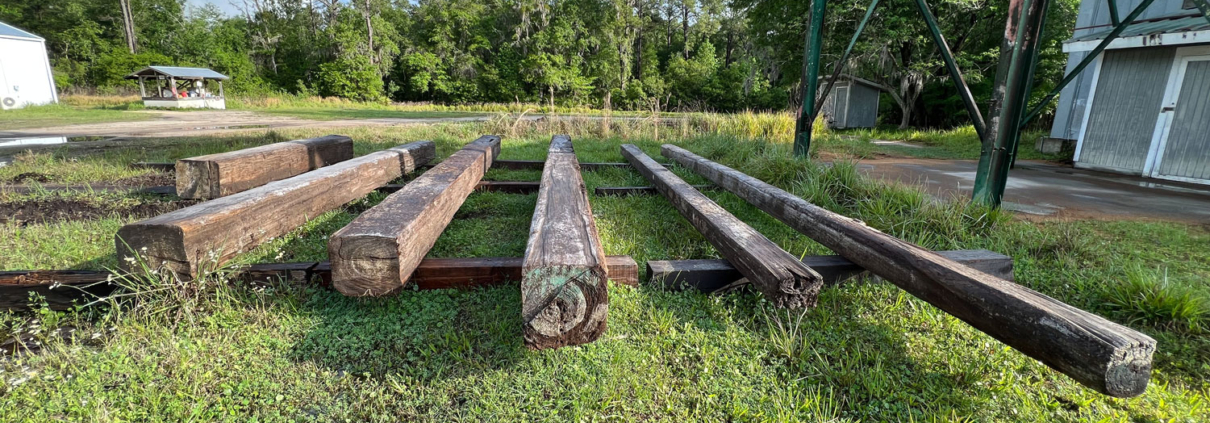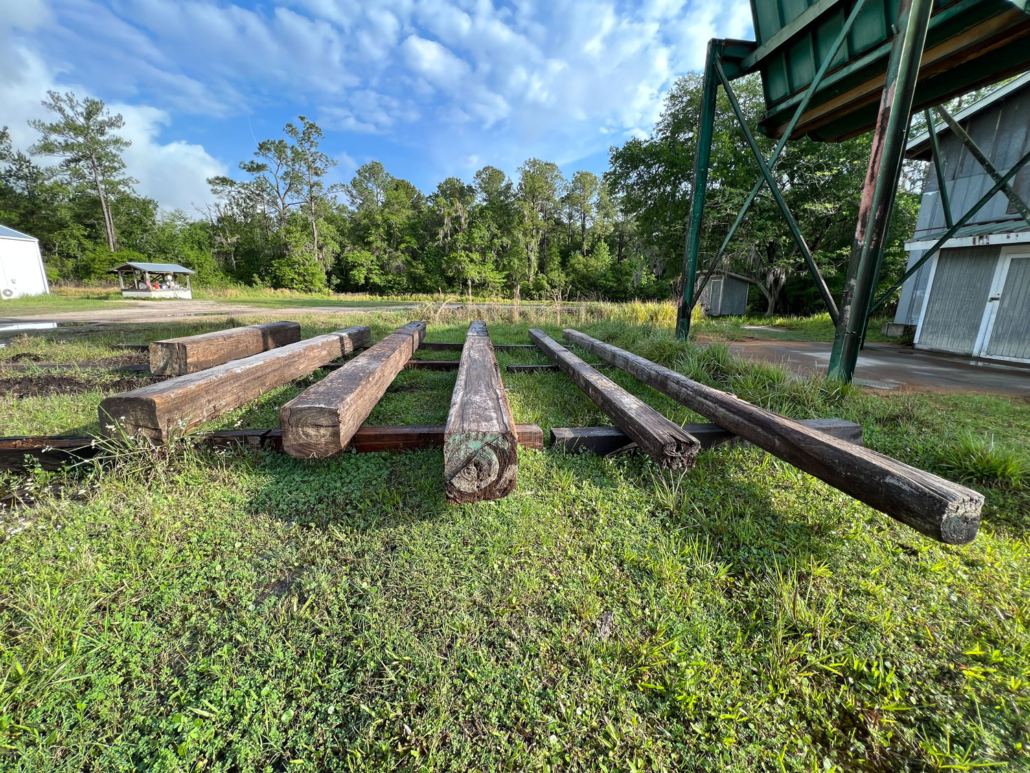Hand-hewn Beams
Recently, we pulled River Recovered® longleaf pine logs out of our millpond to mill for several upcoming large projects. Among the material pulled were these six hand-hewn beams. Very rarely do our river logging partners come across beams like these on their dive excursions. Some are milled pieces. Others are obviously hand-hewn beams. So, what gives? How do squared timbers end up underwater? The answer is rather simple.
More longleaf southern yellow pine lumber was processed and exported out of Pensacola Bay, Florida than any other port in the country. It’s a good place to look for some historical context. Indeed, in the year 1900, Florida’s single largest economic revenue producer statewide was the mill in Bagdad, Florida on the western panhandle.
As mills like this one and others processed harvested longleaf, they barged it out to ships waiting in the deeper waters of the bay or simply floated it to the ship in rafts. The squared and hewn beams were easier to load into the ship than logs.
Accidents happen. From time to time, those barges overturned and sank or flotillas simply broke apart and the densest members sank to rest for a century or more on the bay bottom.
Heart pine beams like these may have been destined for industrial warehouse construction in the Northeast, for the construction of grand hotels across Europe, or even supportive ribbing in the diamond mines of South Africa.
These beams have a story to tell and each is a unique antique, a true part of American History. They were cut into squares and hewn 200 or more years ago and are among the oldest antique heart pine beams available.





